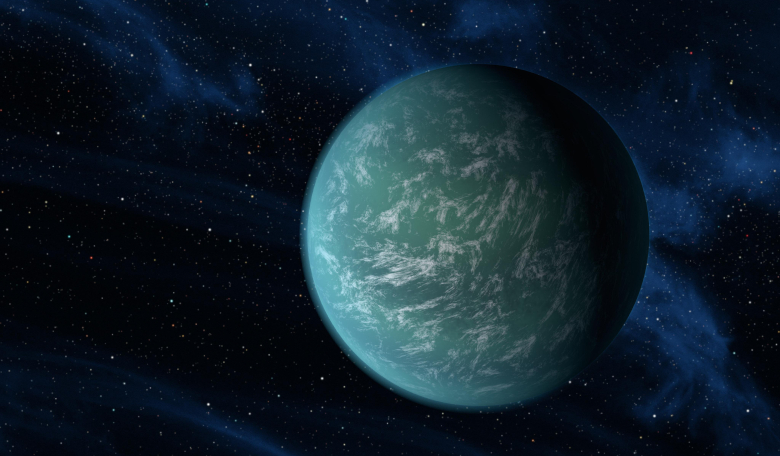In the search for life beyond Earth, scientists can now expand their repertoire of exoplanets to target as according to a new study, researchers have shown that microorganisms can survive and grow in a 100 percent hydrogen atmosphere; a finding that suggests life could potentially thrive on far-off worlds with environments very different than our own.
Atmospheres are probably common on small rocky planets, but studying them is a tricky business and one fraught with difficulties.
Currently, scientists primarily use one of two methods to understand the chemical composition of an exo-atmosphere; the transmission spectroscopy or direct imaging techniques, the latter of which is extremely challenging and is usually performed by the Hubble Space Telescope. Transmission spectroscopy is by far the most successful method and it relies on a detector sampling the light that has passed through an exoplanet’s atmosphere as it passes in front of its host star.
However, the fraction of stellar light that passes through a transiting exoplanet's atmosphere is very small, a limitation which constrains both the telescopes and instruments that can be used. As such it tends to be hot giant exoplanet atmospheres that are studied more readily.
So far, a number of gases such as sodium (Na), potassium (K), carbon monoxide (CO), water (H2O), methane (CH4), and titanium oxide (TiO) have been identified in the atmospheres of giant exoplanets, but when it comes to the search for life, it is detecting compounds around rocky planets or super-Earths that are the coveted prize.
One of the easiest molecules to spot in the gas surrounding a rocky planet is molecular hydrogen (H2).
An atmosphere rich in H2 might not seem like the best planet to aim for, as complex life as we know it requires nitrogen and oxygen to breath, but early in Earth’s history, our atmosphere contained small amounts of hydrogen (H2) that persisted for hundreds of millions of years or possibly even for 2.5 billion years up to the Great Oxidation Event; an era when simple life-forms ruled the world.
H2 is also light compared with other molecular gas, such as nitrogen, which is considerably denser. This means that atmospheres rich in hydrogen typically extend further out into space – up to 14 times larger in extent than nitrogen-dominated skies – making rocky planets with these type of atmospheres easier to detect.
But so far, research on the viability of life in these environments is lacking. To address this shortfall, Sara Seager at Massachusetts Institute of Technology, Cambridge, US and colleagues conducted laboratory-based tests on two single-celled microorganisms, escherichia coli and yeast – chosen because they are the standard model organisms used in biology – to see just how well they survived in an atmosphere made up of 100 percent hydrogen.
Very few other groups of microorganisms have been studied in high H2 gas concentrations. say the team in their paper submitted today to Nature Astronomy, none of which include eukaryotes. Eukaryotes are organisms whose cells have a nucleus enclosed within membranes, like yeast. Prokaryotes on the other hand, like escherichia coli and other bacteria, have no membrane-bound organelles.
The team only considered a pure 100 percent H2 atmosphere as a control in their studies because if life can survive in that, then it can also survive where molecular hydrogen is the dominant gas above all others say Seager and colleagues.
Their results showed that both organisms could reproduce normally, albeit at lower rates than in air.
“We show that a 100% H2 atmosphere has no detrimental effects on microorganisms that do not normally inhabit H2-rich conditions,” write the authors in their paper.
Escherichia coli or E. coli as it is better known, reproduced around two times slower, while yeast was around 2.5 orders of magnitude slower, results that were due to the lack of oxygen, the team argue.
Although microorganism’s do not need oxygen (O2) to breathe, they do use it in biosynthesis to convert substrates into more complex products.
Yeast, in humans, helps the absorption of vitamins and minerals from food and even helps fight disease, so it is an essential microorganism to have around.
While it doesn’t appear to flourish in H2-rich environments, the exceptionally slow growth rates for yeast should not apply to all eukaryotes say the team, and although yeast maybe at a disadvantage, others may prevail.
For example, important organic precursor molecules, such as nitriles that are linked to the formation of nucleotides, the building blocks of RNA and DNA, can form much more easily if reduced gases I.e. a hydrogen rich one, are present than if they are not, say the authors.
Accordingly, “an H2-dominated atmosphere with its trace amounts of reduced gases is conducive to the origin of life, not detrimental,” they write.
Whats more, microorganisms like E. coli produce a great variety of gases, including potential biosignature gases, which could build up in sizeable abundances and eventually become detectable.
A task that should become easier when the James Webb Space Telescope (JWST) is launched.
With its spectroscopic abilities, the JWST will be a boon for the study of exoplanetary atmospheres, as it operates at infrared (IR) wavelengths; the region of the electromagnetic spectrum that astronomers use to identify molecules, especially planetary atmospheric ones such as methane, carbon monoxide (CO), and carbon dioxide (CO2).
With the aid of JWST and ground-based spectrometers and given the tenacity of both a simple cellular architecture such as E. coli and a much more complex single-cellular microorganism such as yeast to thrive in a pure H2 gas environment, this provides a much broader spectrum of potential habitats to study in the search for life, concludes Seager and colleagues.











